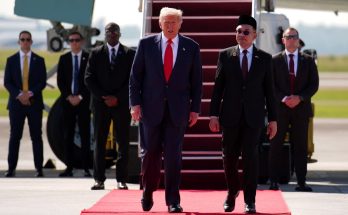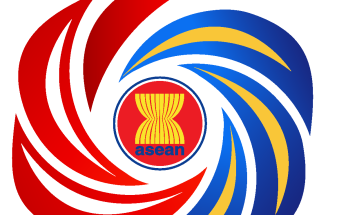The defence expenditure of a country is determined by many factors, both objective and subjective. These include:
- The strategic environment and threat perception at a particular time. This may lead to the problem of short-term focus on defence and crisis management when things go wrong.
- The view of the government regarding its responsibilities towards the social, developmental and protective functions of the state and the relative priorities accorded to these functions.
- The perceived opportunity cost of defence spending. The more the social and
developmental demands on the government, the higher the opportunity cost of defence becomes. But this is balanced by the ‘opportunity cost of not spending on defence’, which implies a determination and acceptance of the associated risk.
- The extent to which a government wishes to employ its defence forces to support diplomatic initiatives (for example, peace support operations) and as instruments for disaster relief and the provision of essential services.
- Defence spending spin-offs. Where positive spin-offs for the economic, technological and social development of the country can be obtained, defence spending will receive stronger national support. It is therefore to the advantage of defence strategists and planners to seek positive ways and means to enhance spin-offs on defence spending. In this regard, the ‘Make in India’ policy initiative is a cause that all stakeholders must wholeheartedly contribute to.
Defence Budgets do not have the inherent flexibility necessary to absorb annual fluctuations. They need a steady long-term direction. Whether it is the most valuable asset, ‘Manpower’ and its induction and training, or the acquisition of platforms and their life cycle costs and infrastructure, a long-term view is needed. Regardless of the need, the defence budget will always be limited by the available national income. This simply implies that defence policy and strategy must be aligned with the dictates of economic feasibility. What is feasible in financial terms is articulated in India in the five yearly reports of the Finance commission (the report of the 13th Finance commission was submitted in 2009 and the 14th finance commission this month) as well as in the erstwhile Planning Commission’s Five Year Plans.
The defence establishment in India including both the services and the civil component have unfortunately neither invested time in interaction with these bodies (Ministry of Defence interactions with the 13th & 14th Finance Commissions were for one day each – 27 March 2009 and 16 April 2014) nor taken their recommendations seriously. It has always lived in the hope that it will get what it needs.
Indications of Financial Feasibility
13th Finance Commission
- Recognised that modernisation of the defence forces is a high priority.
- Recognised the need to provide for some real growth in defence revenue expenditure, to allow for adequate depreciation and maintenance.
- Noted that the Ministry of Finance had projected a growth rate of seven per cent per annum for defence revenue expenditure and 10 per cent per annum for capital expenditure.
- The resultant projection for the overall annual growth rate of defence expenditure was 8.33 per cent.
- It was of the view that there exists considerable scope to improve the quality and efficiency of defence expenditure through increased private sector engagement, import substitution and indigenisation as well as improvements in procedures and practices and better project management within the parameters of Government of India’s policy. Efforts in this direction will further expand the fiscal space available for defence spending.
12th Plan (2012-2017) Approach Paper
- Defence expenditure is projected to fall from 1.83 per cent of GDP in the base year (2012) to 1.56 per cent of GDP in the final year (2017). This is based on defence revenue and defence capital expenditure increasing annually, in nominal terms, by about 7.5 per cent and 15 per cent, respectively. Since defence expenditure is already very low as a percentage of GDP, this projection may actually be conservative.
14th Finance Commission
- Defence expenditure as a percentage of total expenditure is estimated to come down by about one point from 13.8 per cent in 2009-10 to 12.8 per cent in 2014-15 (Budget Estimates).
- Defence expenditure is important and hence resource allocation would have to be done carefully by analysing the competing demands on resources from all sectors, within the overall resource envelope available to the Union Government. Much of the demand on resources from the Ministry of Defence has been in the nature of capital expenditure, which is beyond the scope of the Commission’s assessment. Recognising that revenue expenditure is critical for defence preparedness and maintenance, the Commission kept the defence revenue expenditure-GDP ratio constant during the projection period, instead of allowing growth to decelerate (see graph below), as was the case in the past. In other words, the rate of defence revenue expenditure has been allowed to increase at the same rate as that of the GDP, which is substantially higher than the past growth of defence revenue expenditure.
Union Budget 2014-2015
- The Medium Term Fiscal Policy Statement presented along with the Union Budget on 10 July 2014 states at para 38 that the total defence expenditure as a ratio of GDP is projected to remain at 1.7 per cent in FY 2015-16 and 2016-17 and that Defence services Revenue expenditure is projected to grow at 7.2 percent.
Defence Budget 2015-16
Going by news reports, like in the previous financial years, in 2014-15 as well, a large amount of the Defence Capital Budget was withdrawn at the Revised Estimates stage and some of this amount was allocated to the Revenue budget to meet shortfall. The defence budget allocation since 2012-13 has been on the lines of the 12th Plan approach paper of the erstwhile Planning Commission. The consistency in the approaches of the 13th Finance Commission, 12th Plan approach paper, Medium Term Fiscal Policy Statement, and the 14th Finance Commission make it easy to reasonably estimate the Defence Budget for 2015-16. Based on the above, the defence budget both for 2015-16 and 2016-17 are estimated in the table below.
| DEFENCE BUDGET FORECAST FOR XIIth PLAN PERIOD BASED ON ASSUMPTIONS IN THE XIIth PLAN APPROACH PAPER | |||||||||
| Financial Year | GDP | Defence Budget as a % of GDP | AS PER approach paper of XIIth PLAN Growth Figures of annual growth rate of 15 % CAPITAL and 7.5 % REVENUE | Actual expenditure for 12-13 RE for 13-14 and BE for 14-15 | % age Share as per Planning commission estimates and as per actual expenditure (in brackets))(RE for 2013-14 and BE for 2014-15) | Revenue expenditure as a % of GDP | |||
| Capital | Revenue | TOTAL EXPECTED DEFENCE BUDGET | |||||||
| CAP | REV | ||||||||
| 2011-12 | 9009722 | 1.897 | 67902 | 103011 | 170913 | 170913 | 39.73 | 60.27 | 1.14 |
| 2012-13 | 10113281 | 1.867 | 78088 | 110737 | 188824 | 181776 (70499+ 111217) | 41.35 (38.8) | 58.65 (61.2) | 1.10 |
| 2013-14 | 11355073 | 1.839 | 89801 | 119042 | 208843 | 203672 (78872 +116931) | 43 (40.28) | 57 (59.72) | 1.03 |
| 2014-15 | 12876653 | 1.796 | 103271 | 127970 | 231241 | 229000 (94588 + 134412) | 44.66 (41.3) | 55.34 (58.7) | 1.04 |
| 2015-16 | 118762 | 137568 | 256330 | 46.33 | 53.67 | ||||
| 2016-17 | 136576 | 147885 | 284461 | 48.01 | 51.99 | ||||
| 526497 | 643202 | 1169699 | |||||||
Militaries in general and more so in India where there is no serious discussion when law makers take up the Defence Budget for discussion think of civilians as ignorant of security matters. The reverse is also true: defence planners continue to make plans without regard to the availability of resources. This is likely to be proven when the actual budget is presented tomorrow. It is a fairly simple exercise to estimate what the defence budget will be given available indicators. My assessment is that the Budget Estimate for defence is likely to be around Rs. 250,000 crore, with 105,000 crore for Capital Expenditure and 145,000 Crore for Revenue Expenditure.
Views expressed are of the author and do not necessarily reflect the views of the IDSA or of the Government of India
Courtesy:IDSA
Author Profile
- India Writes Network (www.indiawrites.org) is an emerging think tank and a media-publishing company focused on international affairs & the India Story. Centre for Global India Insights is the research arm of India Writes Network. To subscribe to India and the World, write to editor@indiawrites.org. A venture of TGII Media Private Limited, a leading media, publishing and consultancy company, IWN has carved a niche for balanced and exhaustive reporting and analysis of international affairs. Eminent personalities, politicians, diplomats, authors, strategy gurus and news-makers have contributed to India Writes Network, as also “India and the World,” a magazine focused on global affairs.
Latest entries
 DiplomacyOctober 4, 2025UNGA Resolution 2758 Must Not Be Distorted, One-China Principle Brooks No Challenge
DiplomacyOctober 4, 2025UNGA Resolution 2758 Must Not Be Distorted, One-China Principle Brooks No Challenge India and the WorldJuly 26, 2025MPs, diplomats laud Operation Sindoor, call for national unity to combat Pakistan-sponsored terror
India and the WorldJuly 26, 2025MPs, diplomats laud Operation Sindoor, call for national unity to combat Pakistan-sponsored terror India and the WorldJuly 25, 2025When Fire Ends, Diplomacy Begins
India and the WorldJuly 25, 2025When Fire Ends, Diplomacy Begins India and the WorldJuly 16, 2025Operation Sindoor and its Aftermath: India’s Successful Diplomatic Outreach
India and the WorldJuly 16, 2025Operation Sindoor and its Aftermath: India’s Successful Diplomatic Outreach







